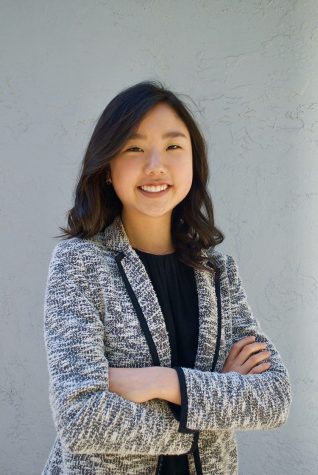Committee Formed to Address Stress
October 19, 2015
8 students, faculty members, and parents attended Stanford University’s Challenge Success Conference in Palo Alto on September 25 and September 26. The goal for the group was to address the symptoms and root causes of stress at Campolindo and learn about the different methods of addressing stress that have proven successful at other high performing schools.
Seniors Katie Erickson and Fiona Stewart participated in the conference along with principal John Walker, counselor Jenna Wrobel, social studies teacher Ryan Boyd, and learning skills teacher Kristen Michael.
The team has been assembled to address the results of the Stanford Survey of Adolescent Student Experiences, which found high levels of stress in the Campolindo student body.
At the conference, data about student course load, homework load, sleep patterns, as well as strategies for reducing stress were discussed. With different speakers at the breakout sessions, the team came up with a couple of ideas to combat stress, such as limiting homework and block scheduling.
Whether or not action is actually taken depends on a variety of factors, not the least of which is administrative willingness. “It all comes down to the administration because we don’t have as much power, but I do think a lot is being discussed and people are ready for action and people are ready for change instead of just talking about how stressed people are,” explained Michael.
Changing priorities is another challenge. “Many other schools are also experiencing the same amount of stress… I think many teachers don’t intend for it to be this way, but the environment at Campo has become more focused on the grades rather than learning,” said Stewart.
Erickson added, “I think schools could give less homework to relieve stress.”
While the survey was administered in April 2015, some believe that the results do not reveal a new trend, but rather a climate that has been established over many years.
According to history teacher Lindsay Webb-Peploe, excessive stress was an issue when she was a student at Campolindo 18 years ago. “I think for those people at Campo who are interested in going to a four year college, I think stress is similar, because people were trying to take a decent workload. We didn’t have nearly as many AP course offerings, but I think the amount of work each night was similar to what students experience now,” she said.
Webb-Peploe does admit that there are more varied sources of stress today however.
“Everybody wants you to think that their activity is the most important,” Webb-Peploe said. “So teachers are going to tell you that school is your job and school is the most important. Your volleyball coach is going to tell you that volleyball is the most important and that you should be focusing on volleyball. Your college counselor is going to tell you that getting ready for college is the most important. Your youth pastor is going to tell you that your commitment to your youth group is the most important. And I think it’s very hard for students to feel like, how do I know what’s most important? And students don’t want to let us down. Students don’t want to let their teachers down, they don’t want to let their pastor down, their coach down, whoever. And so it feels like everyone wants the same level of commitment from them and that is hard.”
Making choices, being realistic about what a student is truly capable of handling in terms of work load and extra curricular involvement and social life, appears to be a particular pitfall of today’s teenagers and their families. Of her own extra curricular activities, Webb-Peploe said, “They did [require commitment] but I don’t think people were as demanding. If you couldn’t do something, you just couldn’t do something. And sports didn’t go on as long because people didn’t make it to North Coast Section. They didn’t make it beyond DFAL playoffs.”
Decreasing college admissions rates also play a part in student stress levels, said Webb-Peploe. “I do think that UCs, and CSUs to a certain extent, are accepting less California students, so there seems to be a perception that you’re working harder but you don’t have the guarantee necessarily of getting into a California school.”
The conference was just one step for the committee. With the WASC (Wester Association of Schools and Colleges) accreditation process unfolding over the next year, campus climate will continue to be a focus for the administration and staff, and the committee will continue to address the issue of student stress.
Erickson felt “excited and optimistic being able to learn about student stress and being able to help it.”
Stewart also “felt excited about going to the conference and being a part of the upcoming changes that are coming to Campolindo.”
Webb-Peploe is hopeful that reflecting on campus climate and reflecting on general student emotional health will become a regular practice. “I think it’s always important to take stock of what we’re doing here at Campo and to find out if homework or if class stuff is putting too much of a demand on our students. I think that’s really appropriate, and I think we should be doing it probably more regularly. You know, we’re doing it this year, maybe we should do it in another couple of years, once we implement some of our findings,” she said.
She added, “I hope we – I don’t just mean Mr. Walker – but we, have the courage – we, teachers, administration, students, parents – I hope we have the courage to change things even if they’re difficult. I worry that it’s great to reflect but I worry that we don’t necessarily change what needs to be changed.”

